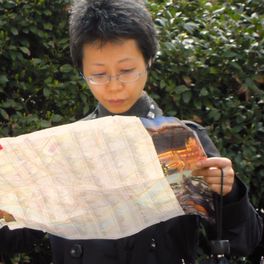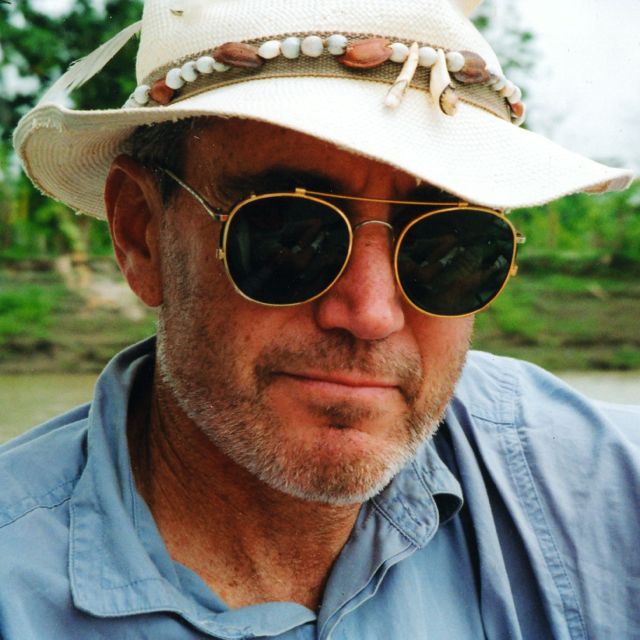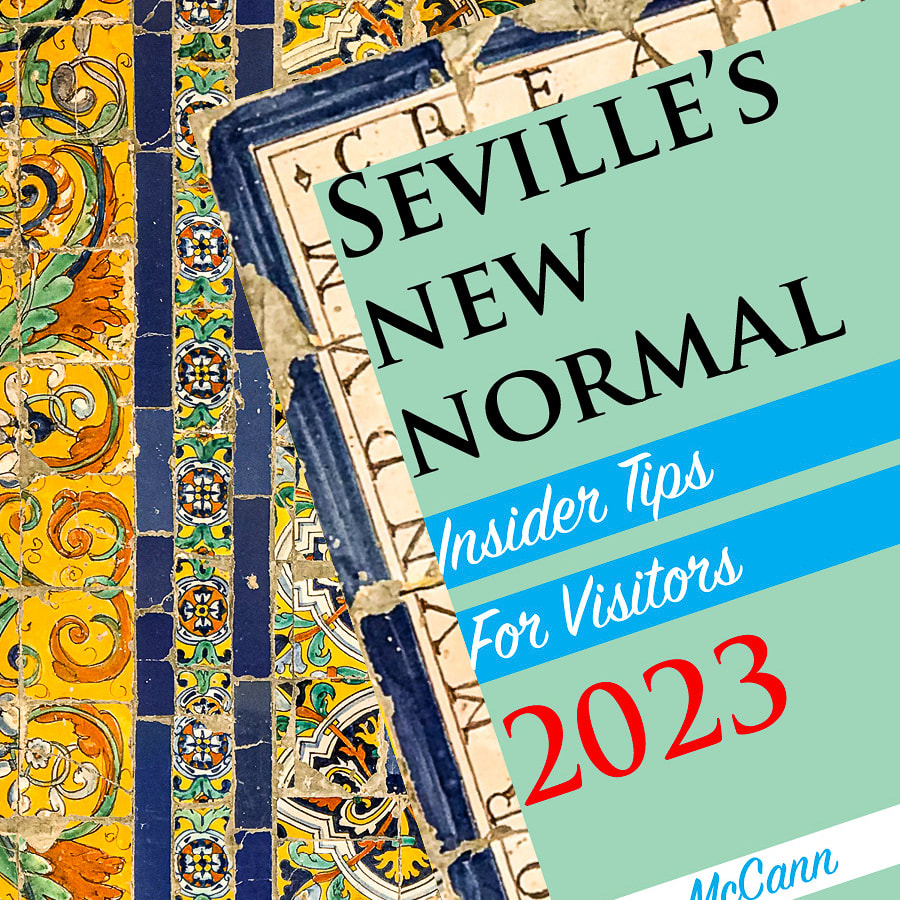|
“You can’t buy happiness,” an American woman once told me. “But you can put a down payment on it.” If you’re looking for ways to invest in your own happiness, you'll find it pays to focus on experiences, rather than things, according to San Francisco State University researchers. “The study,” reported Science Daily, “demonstrates that experiential purchases, such as a meal out or theater tickets, result in increased well-being because they satisfy higher order needs, specifically the need for social connectedness and vitality – a feeling of being alive.” “By far the most important lesson travel teaches you,” observes veteran travel writer Rolf Potts, “is that your time is all you really own in life. And the more you travel, the more you realize that your most extravagant possessions can’t match the satisfaction you get from finding new experiences, meeting new people, and learning new things about yourself.” In fact, asserts Potts, “Time = wealth.” For some, the luxurious sensation of having plenty of time to travel – on any budget, or practically no budget at all – can become habit-forming. “It was exactly three days into my first trip back in 1999, as I celebrated the Millennium at Angkor Wat in Cambodia, when I became inflicted with an untreatable addiction to world exploration,” writes blogger Wandering Earl. “So addicted in fact, that the thought of returning home literally made me sick to my stomach. Therefore, without any other option, I made a decision to change paths in life. Instead of going home to follow my original goal of becoming a Sports Agent, I now embarked on a mission to transform myself into a permanent nomad so that I could continue my travels, and more importantly continue learning from those travels, for as long as possible. The only problem was that I had absolutely no idea what I was doing and I only had $1500 to my name.” Like Wandering Earl, Nora Dunn had planned a very different life for herself. She was busy running a successful financial planning practice in Toronto when she had two car accidents in one week. “People said ‘the universe is trying to tell you something,’ but I was only annoyed at this diagnosis. ‘What is the universe trying to tell me, for goodness sake? That I shouldn’t drive in the snow?! Get outta my way; I’ve got work to do.’” It took a bout of walking pneumonia to make her finally stop and re-evaluate how well her life was working for her. She realized she hated going to the office and wanted to spend her time “traveling around the world, slowly. Meaningfully. But not just passing through; rather, living around the world.” She became The Professional Hobo, a perpetual nomad who writes about financially sustainable travel.  Me, crossing a Thai bridge Me, crossing a Thai bridge A nomad’s life on a shoestring budget isn’t for everyone; it’s certainly not something I’d chose on a permanent basis. But just thinking about it stirs longings for simplicity, authenticity, and the rapture of feeling alive – both at home and on the road. It inspires me to live and travel a bit more slowly and thoughtfully, relying a little less on money to smooth life’s rough edges, and being more openhearted with strangers, in the belief that most of them have a lot to teach me. One thing I know for sure: Spending more on elaborate vacations isn’t likely to help me have richer travel experiences. “People still believe that more money will make them happy,” says Ryan Howell, one of the leaders in the SF State University study, “even though 35 years of research has suggested the opposite.” And you can take that to the bank. YOU MIGHT ALSO ENJOY
7 Comments
 Great road stories often make me want to grab the author by the lapels and exclaim, “Are you insane?” But in a good way. Take George Mahood, a perfectly normal chap who decides to set off on a 1000-mile journey penniless, without luggage, and naked except for a pair of boxer shorts emblazoned with the Union Jack. Incredibly, he persuades a pal to do the same, and as the two bumble their way north up the length of Britain, relying on the generosity of strangers, I find myself laughing out loud at their exploits. George’s book Free Country is especially pleasurable to read while you’re wrapped in a warm quilt on the sofa, sipping hot tea, and congratulating yourself on having the good sense not to commit that particular folly.  A Romanian Gypsy A Romanian Gypsy Want yet more proof that the course of a great travel narrative never runs smoothly? Cast your mind back to emails from vacationing friends describing the pretty scenery, tasteful restaurants, people just like themselves ... I’m sorry, I must have dozed off there for a moment. In contrast are the late-night page-turners, such as Duende by Jason Webster and Along the Enchanted Way by William Blacker, two very different tales in which young men seeking a more authentic life join the Gypsies (in Spain and rural Romania, respectively), with chaotic, intense, and riveting results. Moments of crisis are often the springboard for unforgettable adventures. Two popular works – Tales of a Female Nomad by Rita Golden Gelman and Halfway to Each Other by Susan Pohlman – begin with women on the brink of divorce. Rita leaves home to spend her life blithely traveling alone through countries all the guidebooks say you’d be crazy to visit without a professional guide and an armed guard. Susan and her husband obey a sudden, mad impulse to grab the kids and move to Italy for a year in hopes of repairing their fractured marriage. In both cases, it’s the twists and tumults that keep you eagerly tapping your Kindle’s screen.  Even without such high-stakes drama, a good memoir plunges the author (and reader) into the unknown. Peter Mayle’s classic A Year in Provence and Victoria Twead’s delightful Chickens, Mules, and Two Old Fools are charming, leisurely tales about the often-surprising perils and pleasures of moving abroad and restoring an old house in the country. Even learning how to kiss cheeks – twice in Paris, three times in rural Provence, as a general rule – requires considerable finesse. “I now pay close attention to the movement of the female head,” writes Mayle. “If it stops swiveling after two kisses, I am almost sure I've filled my quota, but I stay poised for a third lunge just in case the head should keep moving.” I loved both those books but confess that when my turn came, I was tremendously relieved to learn that foreigners moving to Europe aren’t actually required to buy a crumbling farmhouse and restore it with the help of semi-literate but wise and amusing locals. As readers of Dancing in the Fountain know, I chose to live in the city of Seville, which offers just as many cultural pitfalls and pratfalls, but with less mud and a clear-cut rule about cheek kisses: first right, then left, then stop. Some writers hold us spellbound with insights that help us see our own journeys in a larger context. “Travel agents would be wiser to ask us what we hope to change about our lives rather than simply where we wish to go,” says Alain de Botton in A Week at the Airport. Pico Iyer, author of The Global Soul, puts it this way: “We travel, initially, to lose ourselves; and we travel, next, to find ourselves. We travel to open our hearts and eyes and learn more about the world than our newspapers will accommodate... And we travel, in essence, to become young fools again – to slow time down and get taken in, and fall in love once more.” Great travel books offer us the exhilarating experience of being a young fool again – without actually having to undertake a journey of 1000 miles wearing nothing but unmentionables and a hopeful smile. Unlike some of my better-organized and more practical blogger friends, I have not included any books (or indeed any products anywhere on my blog or website) due to sponsorship of any kind. The books mentioned here are ones that have helped me on my journey; I believe you might find them entertaining and useful while planning your own adventures. YOU MIGHT ALSO ENJOY MY WEBSITE’S NEW TRAVEL READS SECTION  “I could never live abroad, it just plain costs too much,” announced one retiree, blithely ignoring the fact her home was in an area of California where the cost of living was more than twice the national average, and the median cost of a house was upwards of $900,000. A lot of my US friends are convinced that it costs a scandalous amount to live overseas. And it would, if you spent money as freely as you might on a go-for-broke two-week holiday. But living abroad – as opposed to vacationing abroad – can actually reduce your everyday expenditures, from rent to transportation to eating out. In California, for instance, it’s not uncommon to pay $4.50 for a fancy coffee, a price tag that brings shouts of disbelieving laughter from Sevillano friends, who pay the same amount (3.50€) for a breakfast of excellent espresso, freshly-squeezed orange juice, and a toasted baguette drizzled with olive oil and topped with slivers of ham. I haven’t had the nerve to tell my amigos about the $900,000 houses yet...  What’s your retirement fantasy? Do you picture yourself sitting on a beach at sunset, sipping a Mai Tai and ordering grilled lobster for dinner? Do you then find yourself wondering if you could afford grilled lobster on your pension? Is this followed by fretting about how you’re supposed to survive on a fixed income in an era of skyrocketing costs? And does that line of thinking quickly spiral into a breathless panic over current global economic instability and the gloomy future of mankind? Take heart! The future may be brighter than you think! I don’t know what’s going to happen to the world’s finances or geopolitical stability – smarter people than I am remain stumped by that stuff – but I can put some of your fears to rest about the cost of living abroad. “You can retire to a place with warmer weather, a better quality of life, less crime, more cultural activities, healthier and less-expensive food, better and less-expensive health care…and you can do it for $2,000 [1580€ or 1254£] a month or less, all in,” according to International Living. Want something even more affordable? The Huffington Post suggests you consider one of the following places, where the cost of living is $1200 [936€ or 752£] a month (the amount of the average American retiree's Social Security check):  World's 7 Best Budget Destinations Cayo, Belize Cebu, Philippines Cuenca, Ecuador Georgetown, Malaysia Granada, Nicaragua Medellin, Columbia Pedasi, Panama These are gorgeous, exotic locales where you can live comfortably and allow yourself to indulge in those Mai Tais and grilled lobsters on the beach. But they’re not your only, or necessarily your best, options. There are plenty of lovely, safe, affordable cities out there, each with its own mix of pluses and minuses. Check out the newly published Expat Insider survey I wrote about in last week's blog post, then Google some of the countless websites describing other expat-friendly destinations around the globe. For pointers about what to look for in choosing a new home in a foreign country, peruse my 101 Ways to Enjoy Living Abroad: Essential Tips for Easing the Transition to Expat Life.  Why go anywhere? Why not just stay home? That’s a great option for many, of course. But for some, the allure of economic advantage and overseas adventure is hard to resist. Those of us who are coming into maturity now are used to being trailblazers. We will live, on average, thirty-five years longer than our great-grandparents did, and spend nearly two decades in retirement. I don’t know about you, but I’ve earmarked those years for exploring the world and generating lots of colorful new stories for my blog and memoirs. If I can save money while I do it, so much the better. YOU MIGHT ALSO ENJOY
“I spent a weekend here last spring,” a newbie expat told me, “and I loved Seville so much that I just flew right home to San Francisco, sold everything, and moved here!” Six months later, deeply disappointed that Seville didn’t match her glorious, sun-drenched, wine-soaked memories, she was gone. The antidote to Syndrome de Paris is, of course, doing some less-superficial research before dashing off to foreign lands. The process of discovery is enlightening when planning your vacation and essential when considering a move abroad. One rich resource of information is the just-released survey, Expat Insider 2014, sponsored by the expat club InterNations. Nearly 14,000 respondents from more than 160 countries described how their new homes measure for overall quality of life, weighing such factors as career opportunities, family life, romantic possibilities, personal finances, and what kind of reception you’re likely to receive from the locals. If you’re looking for the best quality of life (and who isn’t?) here are their top ten countries.  This is a mild version of something that’s become known as Paris syndrome. First diagnosed in 1986, this condition most famously strikes Japanese travelers who become prostrate with shock upon discovering that the City of Lights has a darker side. “Watching movies set in Paris leaves one with an image of the city that is quaint, friendly, affluent, and likely still in black-and-white,” wrote the Atlantic. “We imagine the whole city just smells like Chanel No. 5 and has a government-mandated mime on every corner. And nowhere is this narrow view of Paris more prevalent than in Japan, where the media portrays the city as one filled with thin, gorgeous, unbelievably rich citizens. The three stops of a Parisian's day, according to the Japanese media, are a cafe, the Eiffel Tower, and Louis Vuitton.” The shock of discovering the real Paris – a fabulous city, but one with plenty of rough edges – has sent some Japanese tourists into such a psychological and physical tailspin that they required hospitalization and some serious hand-holding by members their embassy. Interestingly, the three most popular expat destinations weren’t among those quality-of-life leaders.  Street market in Ecuador Street market in Ecuador Most Popular 1. Ecuador 2. Luxembourg 3. Mexico That’s right, the top favorite turned out to be – who would have guessed? – Ecuador! The high personal happiness ranking and tremendous affordability made foreigners living there decide they could let a few of the other quality-of-life indicators slide. Luxembourg stood out as a great place to advance your career but not your social life. Mexico provided a warm welcome and comfortable lifestyle; although career opportunities were more modest, many expats said they hoped to live there forever. Clearly, no one destination is right for everybody, and you’ll want to decide what matters most to you before taking the plunge. And what about the places you’ll want to avoid? Least Popular 1. Greece 2. Saudi Arabia 3. Kuwait If your boss is talking about sending you to one of those three countries, you’ll want to negotiate a much higher bonus and do plenty of research about what to expect. You don’t want to be the one to launch an epidemic of Athens Disease or Kuwait City Syndrome. YOU MIGHT ALSO ENJOY  There’s nothing like a little brush with the forces of evil to cheer people up. Apparently we all need to let ourselves be terrified occasionally, if only to prove to ourselves that we are strong enough to handle it. That's why we embrace horror movies, ghost stories, Ouija boards, and Halloween. In America, we spend 364 days a year in what strikes some of my European friends as forced good cheer; to go around gloomy or morose in “the greatest country on earth” is considered almost unpatriotic. Our churches don’t include the gory crucifixion scenes so common in Europe or the fanged demons bedecked with skull necklaces that are popular in Asia. We make an effort to shield kids from life’s harsher aspects. But on October 31, it’s not just acceptable but praiseworthy to scare the socks off them. As kids, Rich and I loved the mild thrills of trick-or-treating in a familiar place that was suddenly a dark and mysterious underworld filled with little witches, vampires, and ghouls. When we married and moved to Ohio, Rich and I decided to get into the spirit by fashioning a ghost out of an old bedsheet and hanging it out the window. “That is so lame,” sneered a six-year-old neighbor I’ll call Dwayne. Every year we ramped up the fear factor a little, and every year Dwayne scoffed. I realize how petty this sounds, but after a while it became a sort of vendetta. And then, the year Dwayne turned eleven, we hit on a foolproof plan. That Halloween, I opened the door dressed in a headless costume, a candle in my skeletal hands. The entryway was filled with bats, snakes, dead leaves, cobwebs, spiders, and flickering candles. “This is so lame,” sneered Dwayne. “That’s Rich in the headless costume. Like we’re impressed.”  Rich, the Ghoul Rich, the Ghoul Saying nothing (after all, I was headless) I walked deeper into the room, pointing at the table where we’d placed a big cardboard box marked “Really Good Candy!” Dwayne swaggered up to the table, leaned forward and lifted the box. Inside, poking up through a gap in the table, was Rich’s (seemingly severed) head, face made up like a ghoul, mouth dripping what looked like blood. Dwayne screamed, the other kids screamed, and they all ran out of the house as fast as their legs would carry them. Rich crawled out from under the table to give me a high five. But he was back on duty in minutes and wouldn’t leave his post for the rest of the evening. Because word spread like wildfire, and soon children were lined up on the front lawn waiting their turn. Each little group would creep in, nerves jumping. Someone would lift up the box, they’d see Rich the Ghoul – and everyone would run screaming out of the house. I don’t think we gave away a single candy bar all night.  "Come in, children. Nothing to be afraid of..." "Come in, children. Nothing to be afraid of..." Late in the evening, Dwayne returned, bringing his cousins. He strutted up to the table saying, “This is so lame. That’s Karen in the headless costume, and when you pick up the box, you’ll see Rich’s head. It’s no big deal – ” And then Rich reached out from under the table and grabbed Dwayne’s leg. The kid had to be scraped off the ceiling. And that was the last time he, or anyone else, ever referred to our Halloween celebrations as “lame.” We never did anything nearly that hair-raising again. We didn’t have to. The neighborhood kids came back year after year, completely pre-terrified – and loving it. That was more than a decade ago, but I’m sure they are still talking about the head in the box – not only with each other but with their psychotherapists and post-traumatic stress support groups. Rich and I haven’t decided whether we’re doing anything here in Seville this year; Halloween costumes and candy are starting to creep into the culture, but scaring the socks off little kids hasn’t caught on yet. However, Rich had this really great idea involving a coffin.... Is Halloween celebrated where you live? Have you seen any great costumes or decorations? YOU MIGHT ALSO ENJOY |
This blog is a promotion-free zone.
As my regular readers know, I never get free or discounted goods or services for mentioning anything on this blog (or anywhere else). I only write about things I find interesting and/or useful. I'm an American travel writer living in California and Seville, Spain. I travel the world seeking eccentric people, quirky places, and outrageously delicious food so I can have the fun of writing about them here.
My current project is OUT TO LUNCH IN SAN FRANCISCO. Don't miss out! SIGN UP HERE to be notified when I publish new posts. Planning a trip?
Use the search box below to find out about other places I've written about. Winner of the 2023 Firebird Book Award for Travel
#1 Amazon Bestseller in Tourist Destinations, Travel Tips, Gastronomy Essays, and Senior Travel
BLOG ARCHIVES
July 2024
CATEGORIES
All
|





































